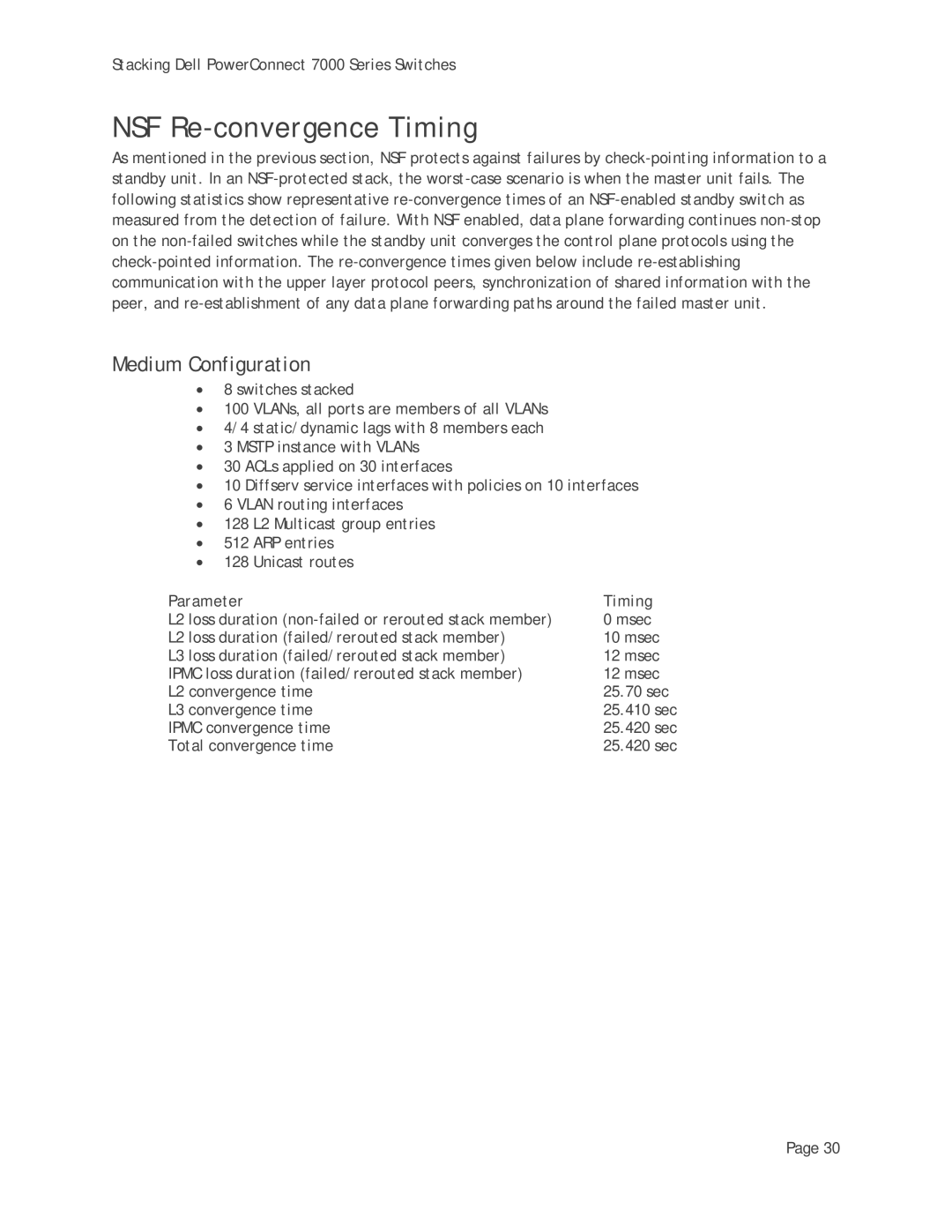Stacking Dell PowerConnect 7000 Series Switches
NSF Re-convergence Timing
As mentioned in the previous section, NSF protects against failures by
Medium Configuration
•8 switches stacked
•100 VLANs, all ports are members of all VLANs
•4/4 static/dynamic lags with 8 members each
•3 MSTP instance with VLANs
•30 ACLs applied on 30 interfaces
•10 Diffserv service interfaces with policies on 10 interfaces
•6 VLAN routing interfaces
•128 L2 Multicast group entries
•512 ARP entries
•128 Unicast routes
Parameter | Timing |
L2 loss duration | 0 msec |
L2 loss duration (failed/rerouted stack member) | 10 msec |
L3 loss duration (failed/rerouted stack member) | 12 msec |
IPMC loss duration (failed/rerouted stack member) | 12 msec |
L2 convergence time | 25.70 sec |
L3 convergence time | 25.410 sec |
IPMC convergence time | 25.420 sec |
Total convergence time | 25.420 sec |
Page 30
